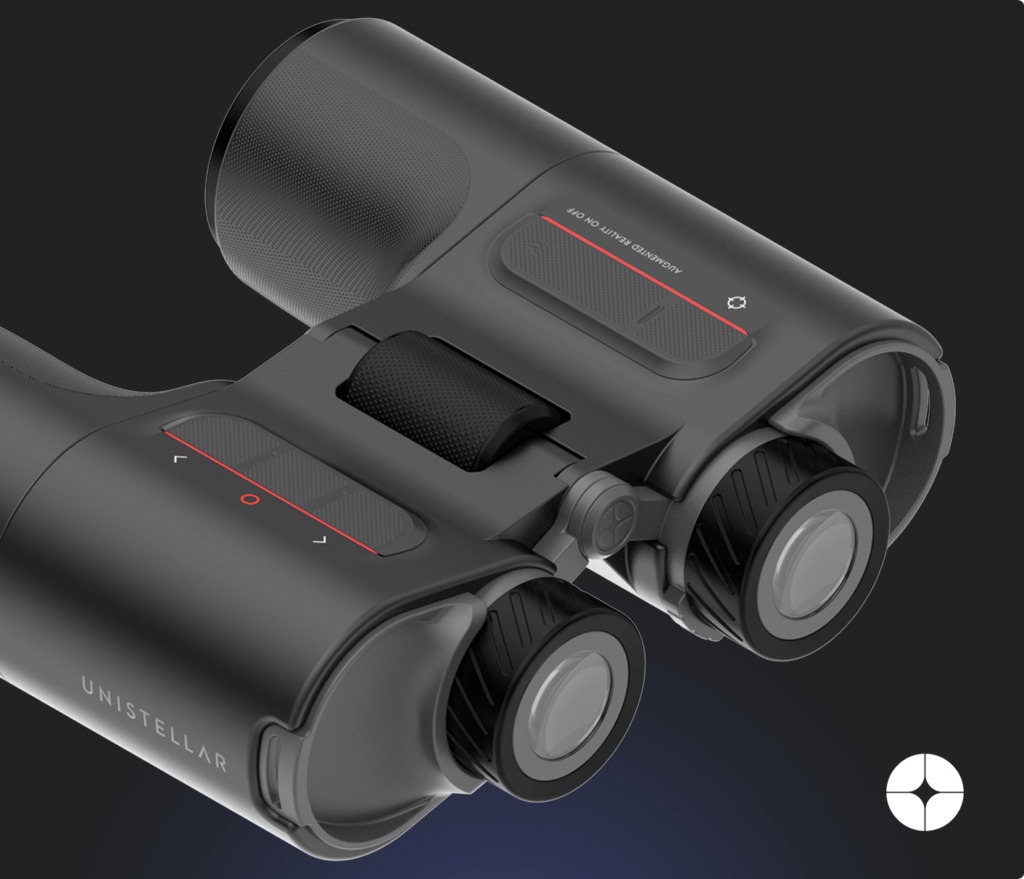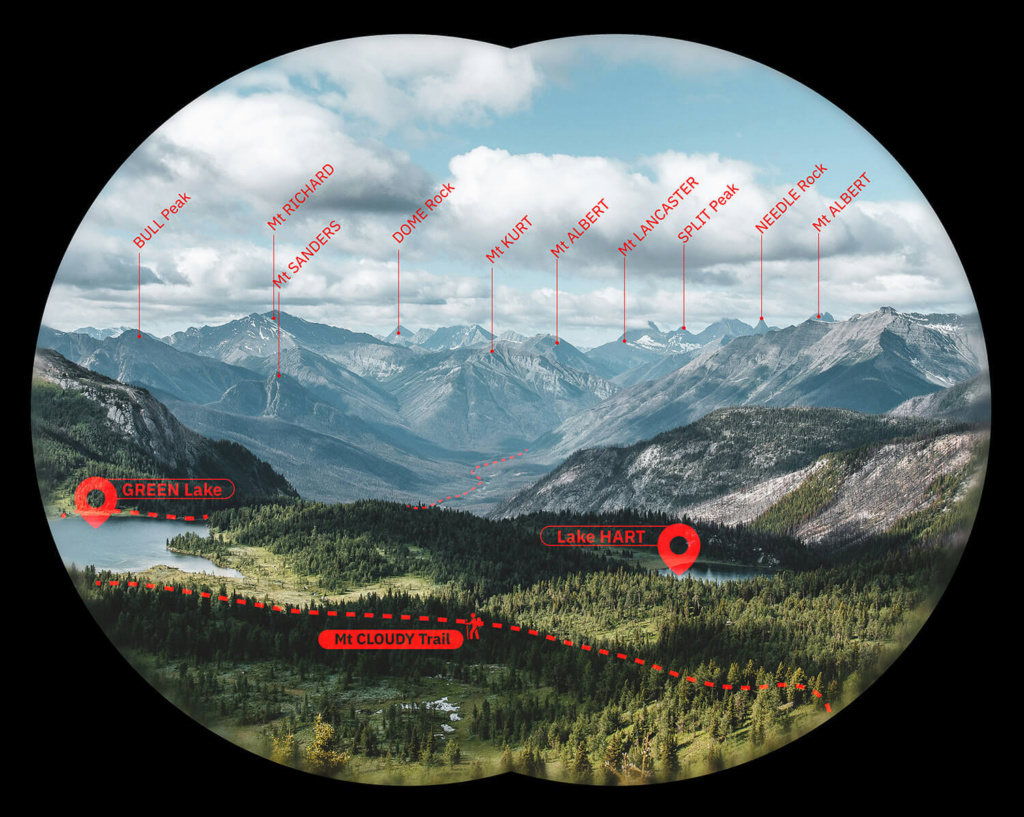Unistellar ENVISION Smart Binoculars with Augmented Reality (AR) Integration – Hype or Reality?

Unistellar, with its ultra-user-friendly smart telescopes, has become a leading innovator in consumer astronomy and has recently announced the Envision smart binoculars.
This device promises to transform stargazing as well as daytime exploration with features like augmented reality (AR) overlays, guided navigation, and a shareable target lock system.
The Unistellar pre-sales crowdfunding campaign on Kickstarter for the ENVISION binoculars where the price has been dropped from $1,199 to $599 has certainly generated a lot of interest and gotten a lot of people talking. Many articles I have read just buy into all the marketing and promises, whilst on the other side, I have also read a lot of sceptical comments from all the “experts” on several astronomy forums.
So whilst Unistellar’s prior success with products like their ODYSSEY, EVSCOPE and EQUINOX telescopes is commendable and means they have a proven track record, I feel a direct and most importantly successful translation of the technology into binoculars is not guaranteed and thus I think it necessitates a cautious approach. So before diving headfirst into the hype, I thought I would take a closer look first, and hopefully get my hands on a pair once they are released to get some first-hand experience with them:

Unistellar Envision Smart Binoculars: A Critical Look at Innovation
In this article I will delve into the promises made by Unistellar in regards to the technical aspects of the Envision, exploring the potential mechanisms behind its advertised features.
I hope to identify areas where success hinges on precise execution and discuss potential limitations that might affect real-world performance. so by examining the Envision binoculars with a somewhat critical, but also optimistic eye, I hope we can gain a clearer picture of its actual capabilities and make more informed conclusions for more realistic expectations on the potential of this exciting new binocular.

1. Augmented Reality Overlays – Day and Night
- Claimed Functionality:
The Unistellar Envision binoculars will have an Augmented Reality (AR) overlay system that they say will be able to highlight objects of interest in both daylight and nighttime observations. This would essentially create a heads-up display (HUD) for stargazing and exploration, So in my mind, I imagine something akin to what you see used on attack helicopters or fighter jets in the movies. - Critical Analysis:
AR overlays within binoculars are not a new concept – you only have to think of Star Wars films from way back when, so I am sure there have been many optical manufacturers keen to be the first to deploy this IRL.
The primary technical challenge lies in seamlessly integrating a digital image with the real-world view through the binoculars and having it react fast enough without a lengthy delay.
Overlays could also potentially become obstructive, obscuring portions of the actual field of view (although I assume you would be able to remove them with a click of a button).
Starlight can be faint, and celestial objects often appear subtle. The binoculars will require a good combination of high-quality optics, image sensors and significant processing power to differentiate faint objects from background noise, to make sure that it is not telling you that you are looking at something when you cannot actually see it in the view.
Additionally, the method by which the binoculars differentiate between a target and background clutter, especially in daylight conditions, remains unclear. Current smartphone AR struggles with overlapping objects, and Unistellar will require some pretty sophisticated software and a pretty fast processor to avoid overwhelming users with irrelevant and potentially incorrect information.

2. Guided Navigation – Point and Learn
- Claimed Functionality:
The Envision binocular will supposedly utilize the AR to guide users towards celestial objects or landmarks in real-time.
So the expectation for me is that by simply pointing the binoculars in any direction, the overlay will identify a point of interest and then direct the user towards it.
Or I would expect to be able to select what I want to see in the App and then look through the binoculars and it will direct me towards it until I have it in view. - Critical Analysis:
The effectiveness of this feature hinges heavily on the accuracy and the size of the database and the software’s ability to precisely match the terrain or night sky and with its digital map.
Will it work if I was on a safari holiday in the Zambezi Valley in Africa – what points of interest would it show me?
Calibration is another concern. How frequently will users need to update the binoculars’ position to ensure the AR overlay remains aligned with the actual sky or your current location?

3. Shareable Target Lock – Pass the View
- Claimed Functionality: Imagine being able to spot a deer or bird and then share the view with a friend. With the Envision binoculars, this is supposedly possible as Unistellar says it allows users to lock onto a target and then hand the binoculars to their friend. The AR overlay will then guide them to the same view.
- Critical Analysis: This feature relies on the binoculars’ ability to effectively lock onto a location and then communicate that information to the app and another user.
If all the users had their own set of Envision smart binoculars this process could be pretty seamless. I can think of many situations when I was working as a safari guide that this would have been very useful for me as there were often times when I struggled to get a guest to find what I was looking at.
For a travel company or perhaps an educational environment where a number of these have been purchased, this could work well, but as a consumer, it would be pretty hard on the wallet to get a whole bunch for your family. So the alternative is to share the binoculars. Again this could work, but there could be complications with issues like different users needing different IPD and diopter settings.
What about if the target is moving – will the Envision binoculars be smart enough to track a moving target and subsequently communicate that information to the app and another user? So successful target lock might be limited to slow-moving objects with a clear contrast from the background. Will a fast-flying bird or a person walking be too challenging to track for this feature to work?
4. Power:
For all of these features to work as advertised, I imagine significant processing power would be required, potentially impacting battery life. This has always been a major issue with Image Stabilized binoculars, up until quite recently – see the new New KITE APC 50 Binoculars.

5. Optics
For me, this is a major point and one that apart from Unistellar telling us that the Envision binoculars come with “Premium Optics”, there are NO details yet.
So what magnification(s) will it use, what size objective lenses, what glass will be used, the optical coatings and what prisms?
All these optical factors will play a MAJOR factor in determining what sort of and quality of view you get and therefore how good the binoculars ultimately are. There is no point in the smart AR telling me that what I am pointing the binoculars at is super interesting, but I can’t actually see it in the view!
Getting all these optical details right is difficult even with standard binoculars.
Think of this: If Unistellar opt for a high magnification for the Envision, will the binoculars have some sort of image stabilization built into them? If not, the view of the stars will be unstable for you to get a good view of them. Add to this all the electronics and batteries and I imagine that they won’t be lightweight, which makes a binocular doubly hard to keep still, especially when pointing it up to the night sky. Then the only way to effectively use them would be with a tripod and if this is the case, perhaps one of their telescopes would be a better option.
On the other hand, if they choose a low magnification, this will solve much of the image stability issues and make the binoculars easier to use in general. But it may mean that you won’t actually be able to see the faint stars that the AR is telling you are there in the black sky you are looking at.
6. Size & Weight:
The incorporation of AR and electronics inevitably increases the weight and complexity of binoculars. These might not be ideal for backpackers or those who prioritize lightweight, compact optics.
7. Price Point:
While the Kickstarter price of $599 (limited to 1000 units) seems attractive, the final recommended retail price of 1,199 is not cheap, which I am sure will deter many casual stargazers.
Conclusion
The Unistellar Envision smart binoculars have the potential to revolutionize how we approach stargazing and perhaps even some terrestrial observation.
However, a critical evaluation is essential and only time and independent testing will reveal if the AR features live up to the ambitious claims. So I am reaching out to them to see if I cannot get my hands on a pair as soon as possible!
Early adopters who are enthusiastic about new technology might find the Envision appealing. However, seasoned binocular users and stargazers who prioritize optical quality and portability might be better served by waiting for post-release reviews.
In conclusion, the Unistellar Envision smart binoculars present an intriguing and exciting concept, but real-world performance requires verification.

 June 18, 2024 | Posted by Best Binocular Reviews
June 18, 2024 | Posted by Best Binocular Reviews 
 Categories:
Categories:  Tags:
Tags: 
